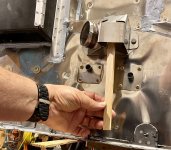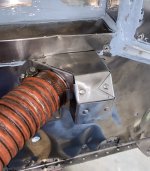Not a very good descriptor, I know. Let me try to explain.
We are doing the first condition inspection on my RV-7 since I bought it already flying. My mechanic does not love the fact that when the cabin heat is not in use for the cabin, the hot air dumps into the space in front of the firewall, about half way up. He is concerned that this is a source of more hot air into this section that we would prefer be cooler.
Is this a problem? If so, is there a fix?
We are doing the first condition inspection on my RV-7 since I bought it already flying. My mechanic does not love the fact that when the cabin heat is not in use for the cabin, the hot air dumps into the space in front of the firewall, about half way up. He is concerned that this is a source of more hot air into this section that we would prefer be cooler.
Is this a problem? If so, is there a fix?






